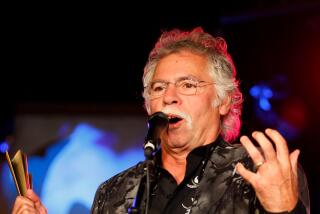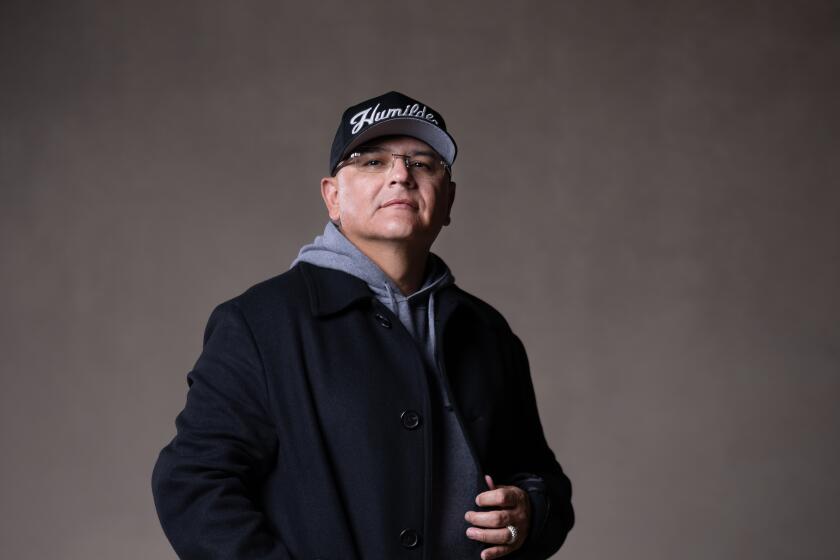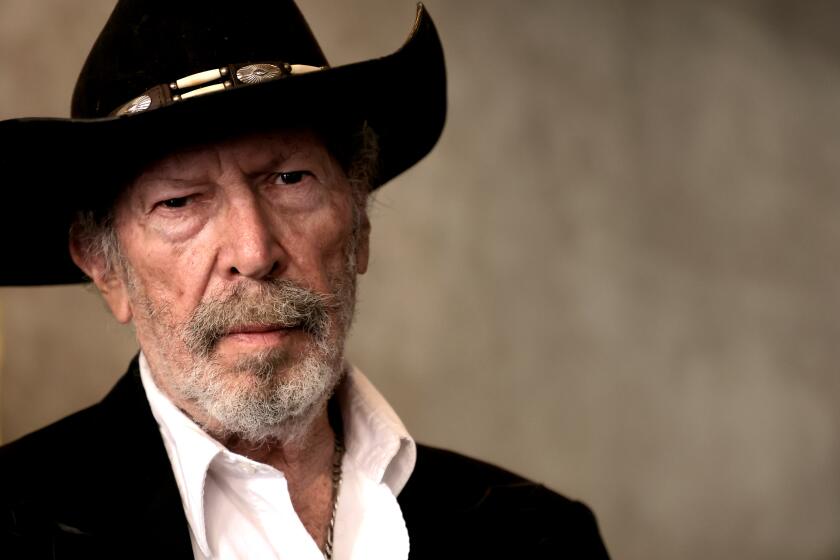Keeping Score
Danny Elfman made the rare transition from rock phenom to respected film composer. In 1978, he founded the band Oingo Boingo, well-known for its exuberant stage shows and offbeat hits such as “Weird Science” and “Dead Man’s Party.” In 1985, Elfman launched into film scores with “Pee Wee’s Big Adventure,” the beginning of a long collaboration with director Tim Burton.
Since then, Elfman has scored nearly 40 films, including “Beetlejuice,” “Batman,” “Mission: Impossible,” “Men in Black” and “Good Will Hunting.” Currently, he has two movies in release, “The Family Man” and “Proof of Life.” But for all his films, his best-known musical theme was created for the opening of TV’s “The Simpsons.” He also has written several scripts and is hoping to eventually direct.
Elfman, 48, was born and raised in Los Angeles and lives in the mountains above Malibu. He has a home studio where he uses a computer in conjunction with a sequencer--a digital device that allows recorded sounds, called samples, to be manipulated--in writing his scores.
DESKTOP: I have two G4 Macs, one for music and the other for graphics.
Q: How do you use the Mac in writing music for a film?
I learned early on that I had to play musical cues for directors, but I’m simply not the kind of pianist who can sit down and play them all. I remember on “Pee Wee” struggling to play for Tim Burton. The keyboard was covered with sweat.
On the second film [“Back to School”], I started to use a sequencer to do mock-ups, adding more and more instruments to make them better-sounding.
Now I start by spending weeks and weeks setting up the Mac, putting together all the sounds I have rolling around in my head. I was once watching [artist] Francesco Clemente getting ready to paint, and he lined up a whole series of pigments in the middle of the room. He would not begin until everything he needed was lined up. I work kind of like that.
I go through my library [of musical sounds] looking for strings and brass I might use. Then I move to the synthesizer, creating different bells or odd sounds. And then finally, I record my own samples, doing my own percussion. Percussion was my first love, and I have a whole warehouse of percussion instruments. When you hear percussion in the movies I do, it’s probably me playing.
I put the movie on the Mac screen and improvise to the picture on an electronic piano, saving the tracks. Then I work up a number of compositions I work out thoroughly, and switch back and forth among them. It’s like being an optometrist.
Q: At the end of the process, does the computer print out the music score for the orchestra?
For about the first 10 years I used the sequencer, I would get all the music cues mocked up and then write out all the parts by hand. I would give those to the orchestrator, who would further break the parts down.
I think it was on “The Nightmare Before Christmas” that I was working with a conductor who found out I did it by hand and told me I was crazy, that I should let [the computer] write the parts out.
I still think that transcribing by hand is a purer way to write, but I also realized it was killing me. Letting go of that knocked my 18-hour days down to leisurely 12-hour days.
LAPTOP: I just traded up--I’m always upgrading--to the G3 Powerbook with 500 megahertz and DVD. I use it mainly for writing scripts and e-mail. I send a lot of e-mail; I’m a junkie. I don’t want to guess how many I send a week, it’s probably pathetic.
I use AOL so that I can use instant messaging with my daughter. She doesn’t live with me, and when I see her online, I can send her messages, like, “Why aren’t you doing your homework?”
HAND-HELD: A Palm. I only use it as an elaborate phone-address book. I would never remember to look at appointments in it. An appointment book would have to be glued to my forehead for me to look at it.
BOOKMARKED WEB SITES: Everything from Amazon to a site on extreme piercing that I found when we were recording the music for “Proof of Life”--it was entertaining for the guys in the studio. It has a great cringing factor.
It’s dangerous for me to be surfing; it takes up so much time. I think mostly what I use the Web for is to look for obscure, hard-to-find DVDs.
Last month, I did my first purchase on EBay--I won a G3 laptop in an auction. But by the time I won it, I had already bought my new one, so I gave the one from EBay to my orchestrator as a present.
FAVORITE TECH TOY: It’s a combination of my other G4 with an Olympus digital camera, a printer and a scanner. It’s what I use for my artwork.
Q: You aren’t known for your artwork.
It’s strictly for personal pleasure, no commercial possibilities at all. I try to do nonmusical work at the end of an evening to get all the music stuff out of my head. I have this G4 in another part of the house, set up with Photoshop.
Q: Do you have plans to show your work?
I don’t know about that. Right now, it’s just showing on my walls.
HOME VIDEO/AUDIO SYSTEM: I have a home theater setup in my living room with a Pioneer Elite projection television, five B&W; speakers, a Sunfire subwoofer and Sunfire amp.
Q: Other musicians interviewed for this column said they avoided high-end audio equipment for their own use.
This isn’t about playing CDs. I have one of those mini component systems next to the G4 where I do my graphics, and I’m quite happy with that. The living room system is all about movies--I like good separation and good sound, like it’s supposed to be. In most of the theaters, the sound is so bad you can get a truer-sounding system in your home.
*
--As told to DAVID COLKER
More to Read
The biggest entertainment stories
Get our big stories about Hollywood, film, television, music, arts, culture and more right in your inbox as soon as they publish.
You may occasionally receive promotional content from the Los Angeles Times.






